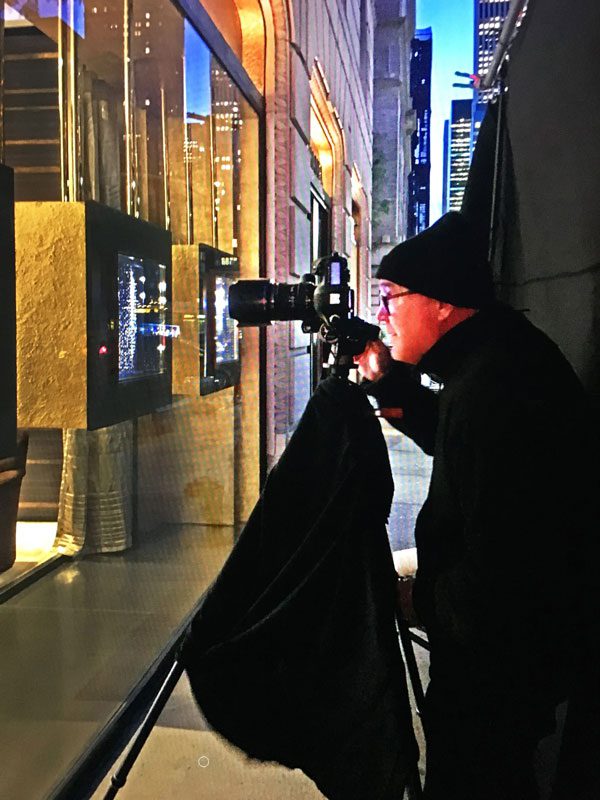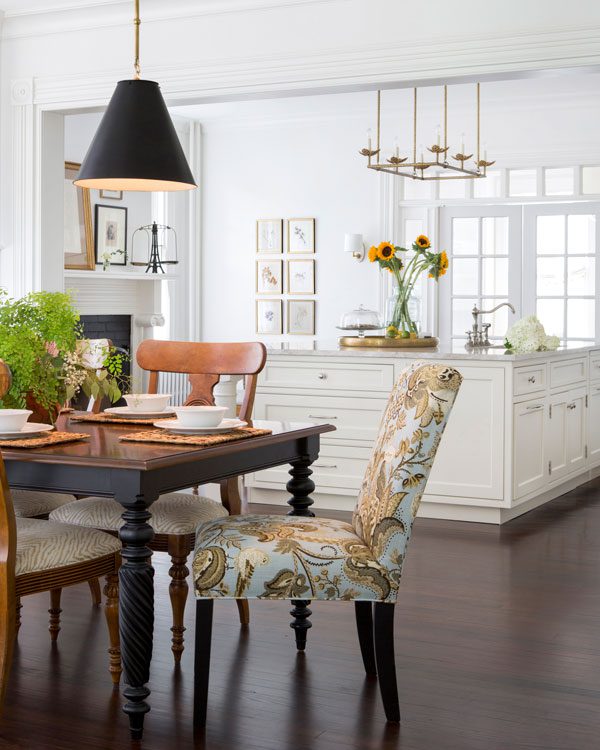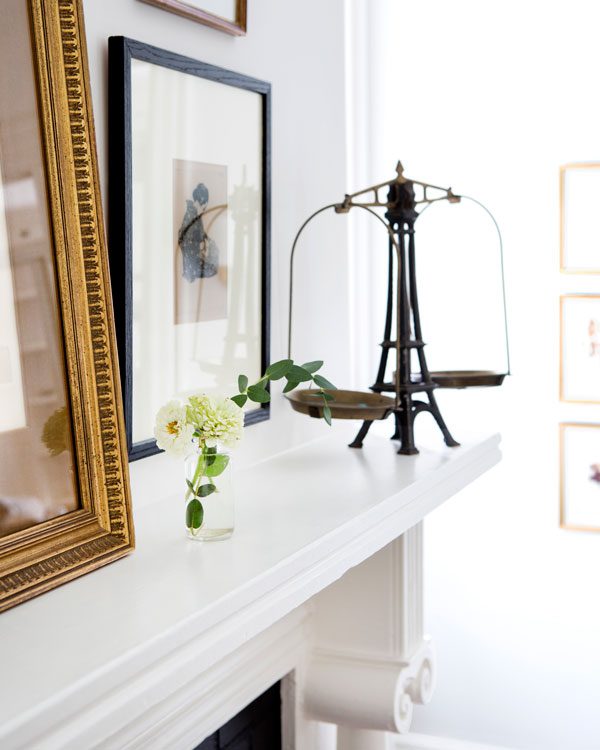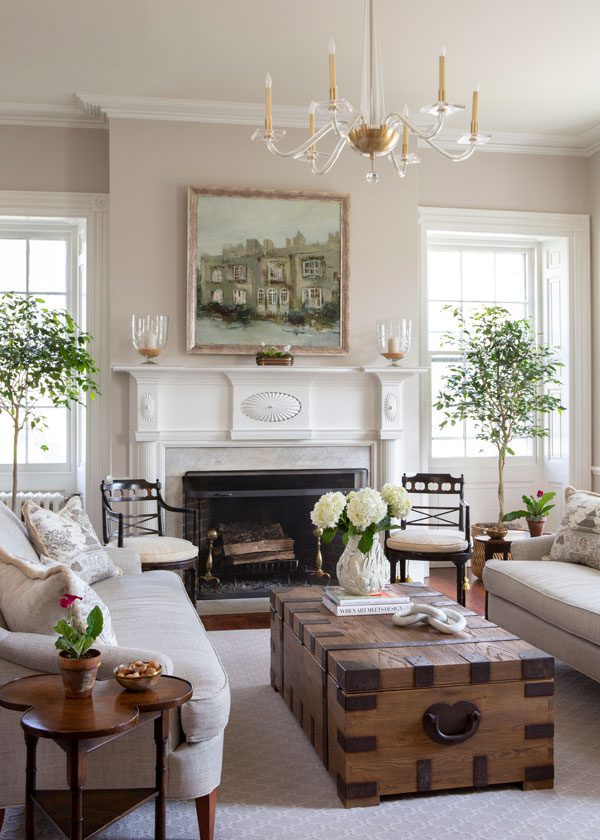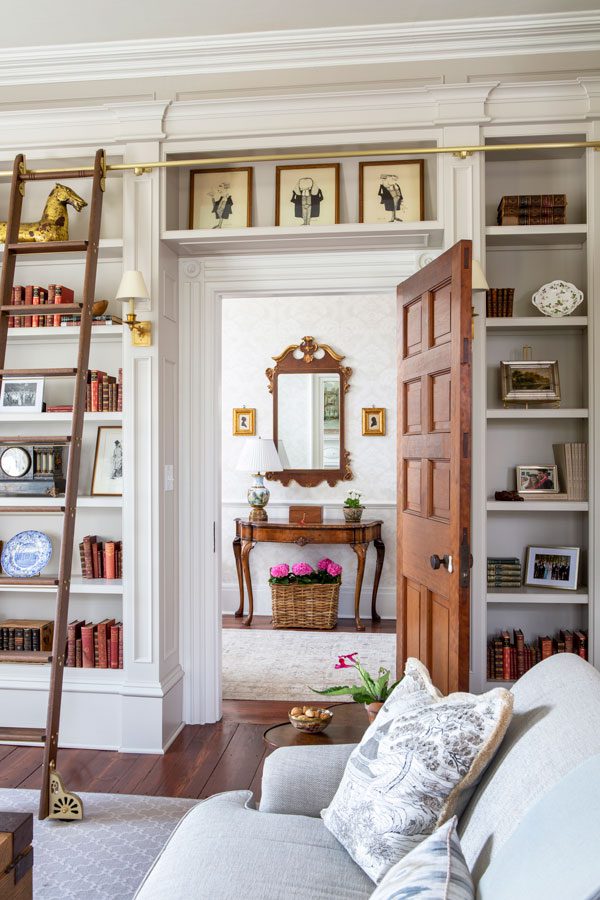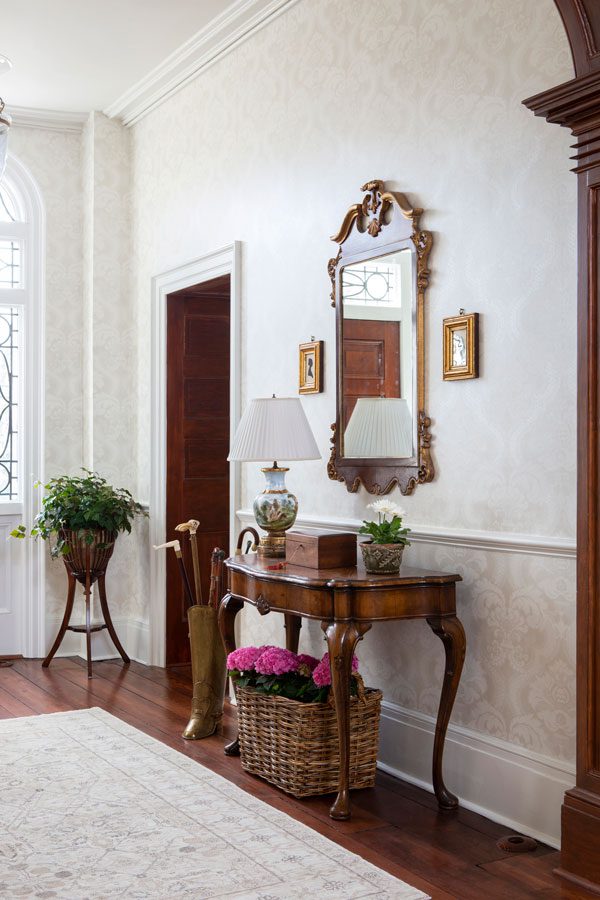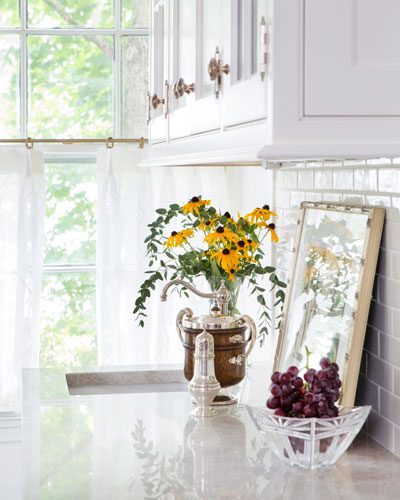Anatomy of a Photo Shoot
Writer Meg Fox | Photographer Tom Grimes | Designer Deborah LeamannWhat’s behind the lens? Design enthusiasts want to know!
We all know the power of a pretty picture and how a beautifully designed room makes us feel. But did you ever wonder what goes on behind-the-scenes to attain that ideal image? Pennington-based interior designer Deborah Leamann and interiors and architectural photographer Tom Grimes — who have collaborated for more than 20 years on dozens of photo shoots — share their point of view:
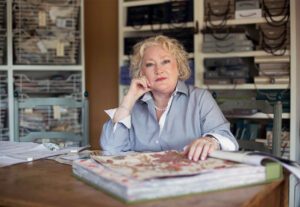
Deborah Leamann, Allied ASID
Principal, Deborah Leamann Interior Design, Pennington
609-737-3330
DeborahLeamannInterior.com | @DeborahLeamann
Design NJ: What are some considerations designers should keep in mind when investing in professional photography?
Deborah Leamann: Design is about storytelling. You want to represent the very best of what the client’s goals and dreams were for their home. If a designer has captured the essence of a home and client via the design, then they should have it photographed professionally.
Tom Grimes: What is it they want to do with the photographs or how will they use them — website, wall art/prints, Instagram or for a specific publication? Do they have a style they want to get across? Is it the right time for photos or the right season? Is the space truly photo-ready? Is this the only project you will have photographed or will you have a complete body of work to present to clients? Is the cost of photographing this project worth it or are you working on a far better project that might be worth waiting for?
DNJ: What type of information do you gather from designers in advance of a photo shoot?
TG: When I take on a project, it’s all about what the designers want and how the final images will be used. Are we trying to pitch a story to a magazine? Are there appliances to be photographed for a possible contest? Are we working with others on the project such as an architect, builder, landscaper or client? This will all affect the budget.
DNJ: The synergy between the designer and photographer should not be understated. Describe the process.
DL: Tom and I work very closely together. We have meetings and walkthroughs prior to photo shoots so I can share with him what is critical for me to capture, such as the essence of the space and how to romanticize the home’s interiors, architectural features, history, or other relevant details and elements. When we arrive, we are energized and excited. Tom brings his eye and the training and technology; I bring the dream!
TG: I like to do a walk-through with all who are involved with the project. Blocking out shots is important to me — almost like storyboarding the shoot ahead of time. This way we are all on the same page. While setting up a shot, I may see a better angle or the client may suggest a different direction or need. Location scouting will also tell when the best time of day is to photograph. Seeing the space in advance also allows for us to be prepared in terms of styling, flowers, props, equipment, etc.
DNJ: How do you prepare for a photo-ready shoot?
DL: It is extensive. I have a process; I do research, take rough shots of the residence and then I sketch out what it is that the space needs to feel polished, fresh and lived in. Sometimes you need a piece that adds height, other areas may need strong color. Many designers rely on stylists, but I have always stylized all my photos and arranged the flowers and accessories.
DNJ: What are the advantages or disadvantages of using natural vs. artificial light when photographing interiors?
TG: I like to use natural light as much as possible. I’ll sometimes add additional strobe lighting to fill in the shadows. It gets more complicated mixing lighting types. And for editorial work, everyone I collaborate with prefers working with natural light. Sometimes it’s not possible — like a man cave in the basement — so then I have to work with what I have. This is where Photoshop helps. I can fine-tune the color balance to match what the eye sees.
DNJ: How many photos can you take in a full day?
TG: The more attention to detail the fewer images one can capture. On a long and busy day when we are all working well together, we may capture 20 usable images.
DNJ: From your perspective, what makes for a compelling photo composition?
DL: It’s another level of creativity. I project myself into a space, such as how would I have items arranged if I were living there. I feel it’s also important to make each space unique and styled without repetition. You cannot show up for a photo shoot with one flower arrangement if you are photographing multiple spaces. Each room must be thought of individually. I always strive to push the envelope as far as possible. Personally, I love to inject one-of-a-kind items, such as antiques, art and accessories. Developing the spaces to their full extent always has a beneficial outcome during a photo session.
TG: A stylish composition is when everyone is working together to capture all the elements that speak to that specific space, a perfectly composed image where one’s eye freely flows around the image while all the styling requirements have been met. Beautiful light, flowers perfectly arranged on a table, a pillow with detailing casually placed in just the right spot, books on the coffee table and a little bit of the very important carpet showing just below. And a slight view into the next room.
DNJ: Editors and readers like to see the connection between rooms. Is that something you strongly consider?
TG: Yes, to tell a good story visually, it’s so important the viewer can visually move from room to room. This is another reason scouting a location is so important.
DL: Absolutely. We are telling a story, and the reader needs to see the connection. We discuss angles, reflections and capturing moments that unfold for the interior spaces.
DNJ: What’s your take on capturing vignettes and what they might add to the overall result? Is it possible to shoot too many vignettes without depicting the whole story?
DL: Yes, I have seen this happen so many times where a designer has taken just pictures of items. Unless the vignette can be reinforced by either its own level of detail within the design or the total sum of the space, it comes off as an amateur move. For instance, I have seen designers present photos of just a chandelier or chair. It has always struck me as odd. You want the reader/viewer to have a sensation of the overall composition of design. Granted, if the chair has some amazing styling details that are unique, of course, you want to showcase that element.
TG: Vignettes are important but should not be overused. The client wants to see the styled room. Vignettes help to set a mood.
DNJ: How do you feel about capturing people and/or their pets in a photo? Are there certain challenges or rewards associated with that?
DL: I’m an animal person so that always works for me, but it can be tricky.
TG: I too love dogs! But I’m not a fan when it comes to having them on a set. The way I use my lighting makes it very difficult to capture any moving object. However, I do like seeing them in other photographers’ images.
DNJ: Do you often shoot for potential cover opportunities? If so, what factors do you consider?
TG: I always love it when I’m asked to shoot for a cover. It’s all about where the type/copy will be placed over the image. Do I need to leave more room top and bottom for the mailing label and title of the magazine? This is when it’s really nice to have the art director on set with you so they can suggest a little more here or there.
DNJ: What role does Photoshop software play in interiors and architectural photography?
TG: Photoshop has changed everything and on the other hand it hasn’t changed anything. Technically it has helped in post-production, but one still needs to compose a beautiful image.
DNJ: Are there certain must-have items in your toolkit you’d never leave home without?
DL: As many plants and flowers as I can fit in my car! Books, books and more books! They breathe life into any interior.
TG: A back-up camera and back-up batteries, photographer’s tape that does not remove paint and wallpaper, a large white bedsheet to bounce light off of or to be used to soften the light, a large black sheet and breath mints!
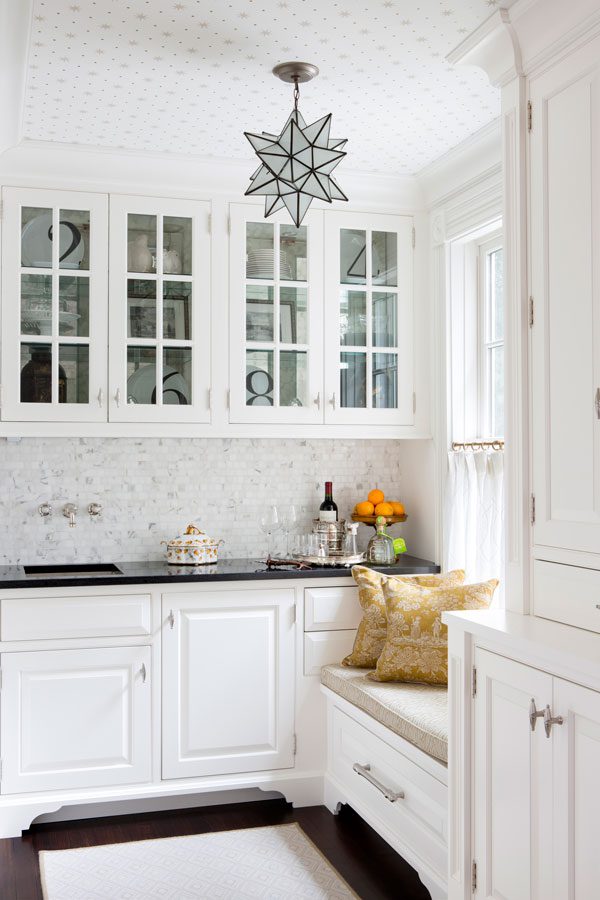
“I sketch out what the space needs to feel polished, fresh and lived in.” — Deborah Leamann (A butler’s pantry featured in Design NJ’s “Past Forward” feature.)
DNJ: What may be some of the challenges of photographing a client’s home?
DL: First, it is explaining the level of involvement the process takes to the homeowner. The equipment, the moving of items that may be necessary, and that they will be displaced for a certain amount of time. Most clients think we show up with a camera and a flower arrangement and take a few snaps. Couldn’t be further from the truth. It’s often grueling (I am a bit of a control freak). I strive for perfection. That’s why it is important to have great chemistry with your photographer and team members. We are on the same page. I arrive with notes and a clear vision of what I want to accomplish. I usually have an assistant or two to aid in loading, moving, arranging and cleaning up after everything is completed.
TG: Sometimes clients don’t like us moving furniture. You need to explain to them it’s to help with the composition of the image and not about the way they place things. Photoshoots always take longer than expected. School lets out at 3 p.m. so expect a gang of kids to crash your set.
DNJ: Do you have any tips for designers when preparing for a shoot?
DL: Do your homework, walk the space, take pictures with your iPhone. Understand what the strengths and weaknesses are of the rooms. Fix it when you see it! It’s so much easier to hide a lamp cord or any other unsightly issues at the time. Backtracking is time consuming and costly. Having the camera tethered to a laptop helps so much to see the overall space before the final shot is taken. It gives me the ability to move an item or rearrange something before it’s too late.
TG: I agree with Deborah. If you see it on set fix it right then. Move that bowl two inches to the left, tape the cord from the lamp up, level the picture frame, close the door in the background, etc.
DNJ: What may be trending in interior photography?
TG: Lots of blues! Blue kitchens and dining rooms. Also, my clients are requesting I photograph with all-natural light and turn all light fixtures off. They too understand how the color temperature shifts when mixing light sources. Their concern is capturing the true colors of the wallpaper, paint and fabrics. Also, I like the blown-out window light look. It directs your focus on what’s important. It’s all about the space. These are not real estate photos.

